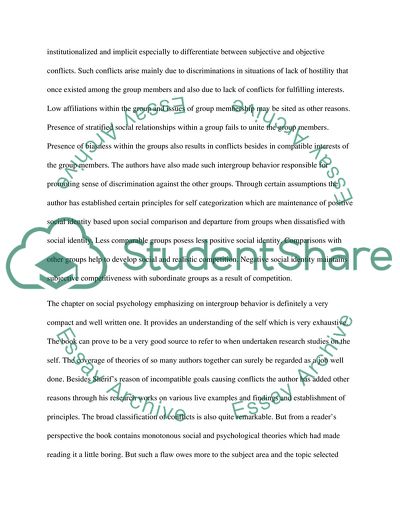Analysis of An Integrative Theory of Inter Group Conflict by Tajfel & Book Report/Review. Retrieved from https://studentshare.org/psychology/1763938-2-3-page-review-of-the-tajfel-turner-1979-chapter-attached
Analysis of An Integrative Theory of Inter Group Conflict by Tajfel & Book Report/Review. https://studentshare.org/psychology/1763938-2-3-page-review-of-the-tajfel-turner-1979-chapter-attached.


